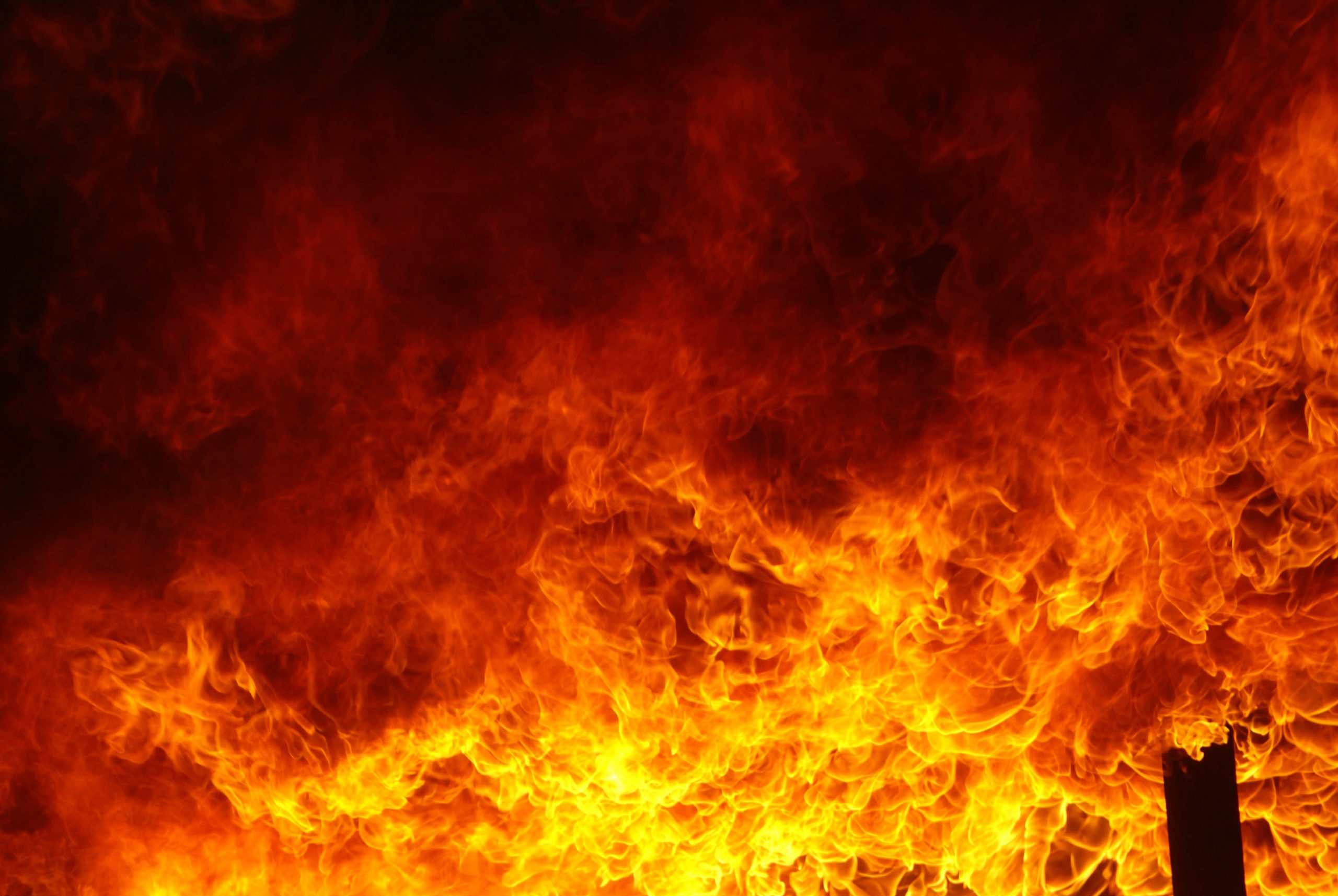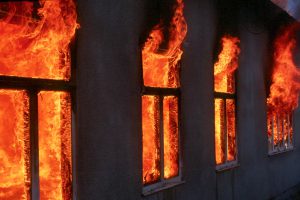There are a number of factors that influence how a fire starts and develops in a room and, eventually, in a building. But let’s start in the simplest way.
A fire starts on a sofa in a room. Already at this, very early stage, it begins to produce combustion products, in the form of gases, liquid droplets and particles. The combustion products mix with air, and because they are hot, they rise upwards in the room, hits the ceiling and spread in all directions along the ceiling. We call this mixture fire gases. The amount and properties of the fire gases are the single largest contributing factor to how the fire develops and spreads. But all surfaces in the room also affect how the fire develops and spreads, regardless of whether the surfaces are combustible or not and regardless of whether they are walls, ceilings, floors or objects in the room.
The flames from the fire in the sofa heat up the surrounding surfaces, that is, the parts of the sofa that are not yet burning, as well as other surfaces in the room. This occurs mainly through heat radiation but also through convection (air movement). As the surfaces of the sofa heat up, they ignite, and the fire spreads over the sofa. The fire gases that are formed also heat up the various surfaces of the room, especially the ceiling and the upper parts of the walls. At this stage, the fire is fuel-controlled, that is, the development of the fire is controlled by the properties and amount of the fuel.
If there is enough fuel and large enough openings in the room to allow air to enter, the heating of the room’s surfaces and objects will eventually reach a point where the fire spreads rapidly to all objects in the room. A flashover occurs, that is, a stage in the fire where the spread occurs over a relatively short period of time from one or a few objects in the room to all objects in the room. Now everything in the room is burning, and flames are escaping through the room’s openings. The fire then becomes ventilation-controlled, that is, the development of the fire is controlled by the availability of air.
After the flashover, the fire becomes fully developed. When the fire is fully developed in a room, there is little chance that there is any life to be saved in that room. However, there may be a possibility of survival in other areas of the building, although conditions can quickly deteriorate.
The fire is now fully developed. It is also ventilation-controlled and will continue to burn until the fuel starts to run out. The fact that flames are shooting out through the openings in the room is a clear sign that the fire is fully developed and ventilation-controlled. The flames show that there is no longer enough air inside the room for the combustion that is taking place.
When the fuel starts to run out, the fire enters a cooling phase and then becomes fuel-controlled again. This description assumes, however, that the fire does not spread outside the room and that it is not extinguished by the fire service.
If the room in which the fire started is in a building where a number of rooms or spaces are connected and connected to each other, the fire will continue to spread to room after room. Even when the fire in the sofa starts, fire gases begin to spread from the first room to the other rooms. These fire gases then heat up, above all, the ceiling surfaces and the upper parts of the rooms.
When the fire has grown large enough, it will grow faster and faster. If the roof surfaces and walls of the building are already heated by the fire gases formed by the fire, the fire will spread quite quickly to other rooms.
Often it is mainly the furnishings and other objects in the room that are the fuel and burn. But flammable surfaces in the building itself also participate in the fire, in the same way as the objects.
The fire can also spread to, or originate in, the building itself and the parts and components that the building consists of. The fire can spread through walls, floors or ceilings, and also inside the building’s structure, where there are often a lot of cavities or other spaces. We are then talking about so-called structural fires. These can be difficult to deal with, not least because they are hidden. We cannot see where they are, because they spread inside the walls, ceilings or floors. And if we try to break up walls or floors with the intention of extinguishing them, there is also a risk that we will spread the fire further because we will then add air to the fire.
In addition to the problem of structural fires, a number of other phenomena can also arise that complicate conditions inside or outside the building. Examples of such phenomena are fire gas explosion and backdraft. In both of these cases, the course of events depends to a large extent on how fire gases spread in the building, the properties of these fire gases (temperature, content, etc.), the shape of the rooms in the building and, not least, on how many openings there are and how large these are.
Large spaces, such as spaces underground or high above the ground, pose special problems and provide slightly different conditions for the spread of fire. These types of fires cannot be described as simply as fires in more “normal” buildings or spaces. Therefore, it is particularly important to have a good understanding of the underlying factors.
There are plenty of literature describing the basics of fire, as well as more complex phenomena related to fires in buildings. I would recommend the following:
- Bengtsson, L-G. Inomhusbrand. Statens Räddningsverk. 2003.
- Drysdale, D. An introduction to fire dynamics. Wiley. 1985.
- Karlsson, B. Quintiere, J. Enclosure fire dynamics. CRC Press. 1999.
However, there are new literature on the way, replacing the book by Bengtsson.

